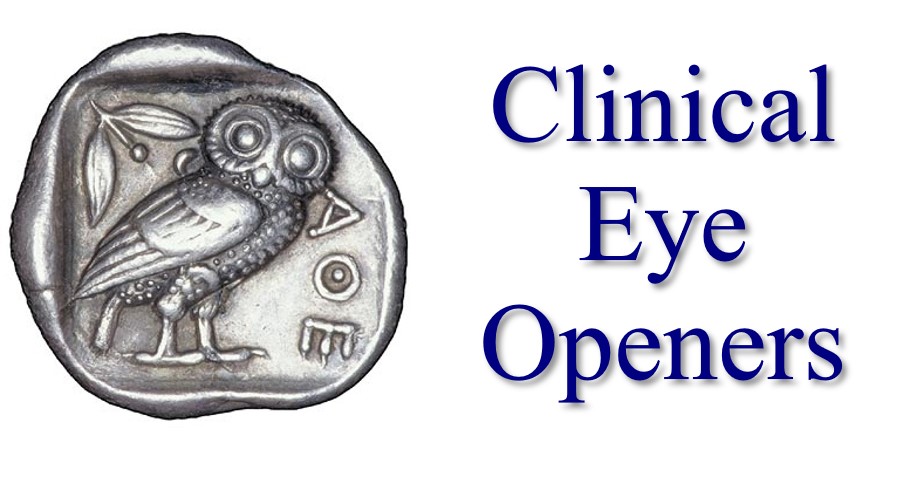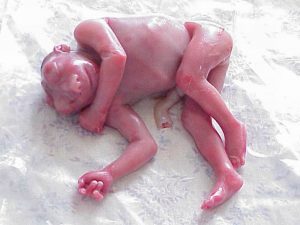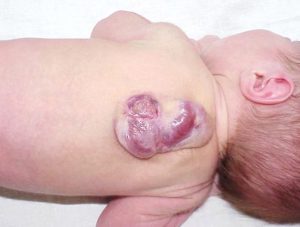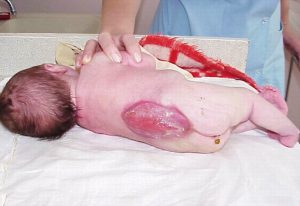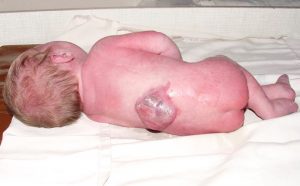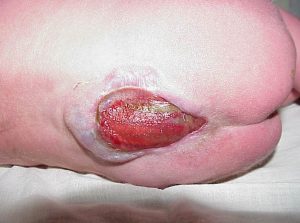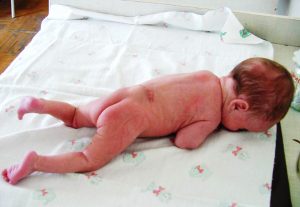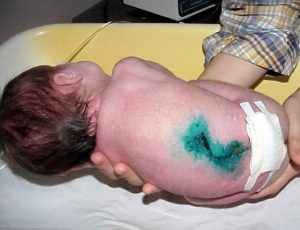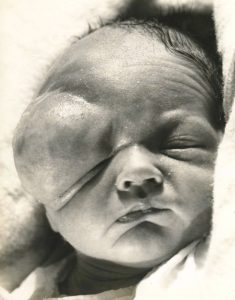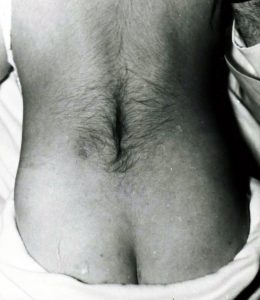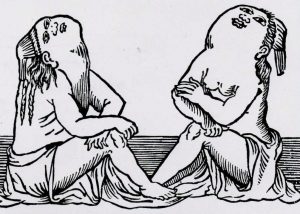Neural Tube Defects (NTD)
Neural Tube Defects (NTD) are among the most frequent structural malformations and a leading cause of infant mortality and, among survivors, of life-long disabilities (mainly lower limb paralysis). The neural tube closes in cephalad and caudad directions. Incomplete cephalad closures result in cranioschisis (exposed brain tissues involute and are described by the term “anencephaly”). Failure or incomplete closures in the caudad direction result in spina bifidas (myelomeningocele, meningocele, vertebral schises, or spina bifida occulta). Total lack of closure of the neural tube is represented by craniorachischisis. In addition, there are focal gaps in closure such as frontal, occipital and other sorts of encephaloceles. The levels where the neural tube is incompletely closed has significantly diverse clinical implications. The following is represented below:
1 – Craniorachischisis.
2 – Anencephaly (wrong but common term for involuted exposed cerebrum).
3 – Iniencephaly (retroflexion and dysplasia of the posterior occiput and cephalad cervical spine – “inion” refers to “neck”). PLEASE SEE VIDEO.
4 – Meningomyelocele – thoracic.
5 – Meningomyelocele – thoraco-lumbar.
6 – Meningomyelocele – lumbar.
7 – Meningomyelocele – lumbo-sacral.
8 – Meningocele lumbar.
9 – Meningocele lumbar, post operative.
10 – Encephalocele orbital, right.
11 – Spina bifida occulta.
12 – Iniencephaly, depiction, history.
20211019 ww
